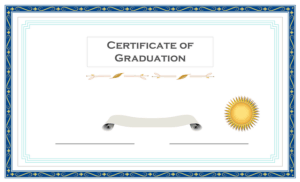Optimizing Scientific Posters for UK Compliance: A Guide with Translation Services Insights
To effectively present research findings at UK academic conferences, it's crucial to tailor scientific posters according to British cultural and academic norms. This includes adapting language (e.g., 'litres' instead of 'gallons&…….

To effectively present research findings at UK academic conferences, it's crucial to tailor scientific posters according to British cultural and academic norms. This includes adapting language (e.g., 'litres' instead of 'gallons', 'colour' over 'color'), aligning with UK measurement conventions like metric to imperial, adjusting color schemes to fit local standards, and ensuring all design elements comply with UK visual communication practices. Utilizing specialized translation services for UK Scientific Posters is key to accurately convey the nuances of scientific terminology and language specific to your field, making your research accessible and impactful to a domestic audience. These translation services ensure linguistic accuracy, adherence to submission guidelines, and professionalism, which are vital for fostering engagement with the local scientific community and beyond. By providing clear, concise, and legible posters that resonate with UK conventions, international researchers can enhance their work's reception and facilitate meaningful discussions and potential collaborations within the global scientific arena.
navigating the scientific community’s global landscape, researchers often encounter the need to tailor their communication to diverse audiences. When preparing scientific posters for submission in the UK, attention to local design norms and language nuances is crucial. This article delves into the essential aspects of crafting UK-ready scientific posters, emphasizing the importance of aligning with British conventions and leveraging professional translation services for UK scientific posters. From deciphering key design elements that resonate with a UK audience to showcasing practical case studies, this guide equips authors with the necessary insights to ensure their work is effectively communicated at UK conferences.
- Understanding the Importance of UK-Specific Design for Scientific Posters
- Key Differences in Scientific Poster Design for a UK Audience
- The Role of Professional Translation Services in Adapting Your Poster
- Step-by-Step Guide to UK-Ready Scientific Poster Submission
- Case Studies: Successful Adaptations of International Posters for UK Conferences
Understanding the Importance of UK-Specific Design for Scientific Posters

When preparing scientific posters for submission, it’s crucial to consider the nuances of design that resonate with the UK audience. The United Kingdom’s academic and research communities have their own conventions and preferences when it comes to visual communication. To ensure your poster is effectively understood and well-received by UK audiences, attention should be given to the layout, language, and cultural context. Utilizing professional translation services for UK scientific posters can bridge the gap between international research findings and a domestic audience. These services not only convert text into the appropriate language but also adapt the design elements to align with local expectations, which may include adjusting measurements from metric to imperial or altering color schemes to comply with British standards. This attention to detail can significantly enhance the clarity and impact of your research, ensuring that it is both UK-ready for submission and accessible to a diverse range of readers. Moreover, leveraging these services can provide an additional layer of credibility and professionalism, showcasing your commitment to engaging with the local scientific community effectively.
Key Differences in Scientific Poster Design for a UK Audience

When designing scientific posters intended for submission within the UK, it’s crucial to consider the cultural and academic context that will influence how your research is perceived by a British audience. Unlike in some other countries, UK-based conferences often favor concise and clear presentations of data, which means that elaborate designs may not be as impactful. One key difference is the language used; while English is commonly understood worldwide, the terminology and units may need to be localized for a UK audience. For instance, references to ‘litres’ rather than ‘gallons’, or using the British spelling of ‘colour’ instead of ‘color’, can make your poster more accessible to native speakers.
Another important aspect is ensuring that all graphics and charts are legible and follow UK conventions. This includes the orientation of graphs, the placement of text, and the use of color schemes that align with academic standards in the UK. For posters that contain text in languages other than English, translation services for UK Scientific Posters should be utilized to accurately convey the intended message, taking into account both linguistic nuances and scientific terminology specific to your field. Employing such services can bridge cultural gaps and demonstrate respect for the audience, thereby enhancing the credibility of your research. Additionally, it’s advisable to familiarize yourself with the submission guidelines of the UK conference or journal to which you are submitting; adherence to these will ensure that your scientific poster is both understood and appreciated by its intended British audience.
The Role of Professional Translation Services in Adapting Your Poster

When preparing your scientific poster for submission, particularly in the UK context, it is imperative to ensure that all text is accurately conveyed to reach a diverse and international audience. Translation services for UK Scientific Posters play a pivotal role in this process. These specialized services offer precise linguistic expertise, transforming your research into clear, effective communication that aligns with the British scientific community’s standards. They ensure that your findings are not only understood by local experts but also resonate with international peers who may attend UK conferences or access published materials. The nuances of language, including technical terminology and idiomatic expressions, can be barriers to clear understanding; professional translation services bridge these gaps by providing accurate translations tailored to the scientific discipline in question. By leveraging their expertise, you can confidently submit your poster for review, knowing that language will not impede the clarity or impact of your research. This meticulous approach to language adaptation is crucial for global scientists seeking to engage with UK-based scientific communities and for UK researchers looking to share their work on an international stage.
Step-by-Step Guide to UK-Ready Scientific Poster Submission

When preparing scientific posters for submission within the UK context, it is crucial to adhere to the specific guidelines and conventions that are prevalent in British academic circles. A meticulous approach to designing your poster to align with these expectations will enhance its clarity and credibility among UK audiences. To ensure your scientific poster meets UK standards, begin by comprehending the submission requirements set forth by the conference or journal you are targeting. This may include specific formatting, language considerations, and content presentation that reflect UK academic norms.
Next, focus on the visual elements of your poster. Utilize a clean, legible font for text, and ensure all figures and graphs are easily interpretable. The layout should facilitate an intuitive flow of information from the abstract to the conclusion, with each section clearly delineated. For posters containing non-English data or text, engage professional translation services for UK scientific posters to accurately convey your findings to an English-speaking audience. These services will not only translate your content but also adapt it to fit UK linguistic nuances, which is pivotal for maintaining the integrity of your research. Furthermore, incorporate a concise and precise title that encapsulates the essence of your study, followed by a structured summary of methods, results, and conclusions. By carefully following these steps and considering language translation as a necessary aspect of your preparation process, your scientific poster will be UK-ready for submission, thereby increasing its potential impact and reception among UK scientific communities.
Case Studies: Successful Adaptations of International Posters for UK Conferences

When international researchers aim to present their findings at UK conferences, adapting their scientific posters to align with local expectations and conventions is crucial. A prime example of successful adaptation involves a research team from Japan submitting their poster for an international symposium held in London. The original poster was rich in technical details and presented in Japanese, which posed readability issues for the UK audience. Utilizing translation services for UK scientific posters, the team converted their content into clear, concise English while maintaining the integrity of their research. This adaptation not only made their findings accessible to a broader audience but also resonated with UK-based researchers, leading to fruitful discussions and potential collaborations.
Another case study showcases the effectiveness of these translation services for UK Scientific Posters in the context of a European research collaboration presenting at a conference in Edinburgh. The initial poster, while scientifically robust, was heavily laden with German terminology and idiomatic expressions, which could be perplexing for English-speaking attendees. By leveraging professional translation services, the researchers ensured that their abstracts, figures, and descriptions were accurately translated, resulting in a seamless presentation that was both informative and engaging for the UK audience. This effort facilitated a smoother exchange of ideas and underscored the importance of localizing scientific communication for international conferences.
When preparing your scientific posters for submission, especially within the UK context, it’s crucial to ensure they resonate with local academic culture and communication norms. This article has delved into the necessity of tailoring your poster design to meet UK-specific standards, highlighting the key differences that distinguish a UK-ready poster from one designed for international audiences. By leveraging professional translation services for UK scientific posters, researchers can effectively adapt their content, ensuring clarity and compliance with British conventions. The step-by-step guide provided offers a clear path to submission, while case studies underscore the practical benefits of such adjustments. In doing so, your scientific posters will not only adhere to UK standards but also make a compelling impression on your intended audience.







